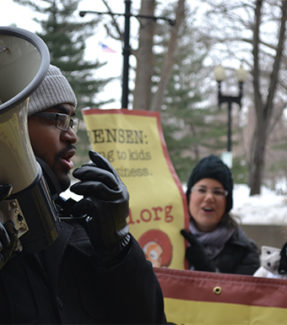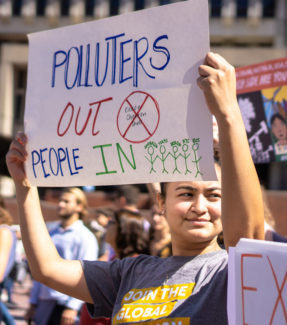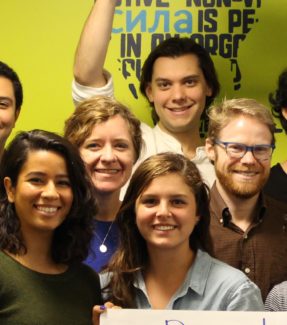By Darryl Fears, The Washington Post
Long before the Trump administration rescinded a ban on the sale of disposable water bottles in select national parks, the Interior Department was aware of a report from the National Park Service that the program worked.
The report was quietly made public at the end of the day Friday after organizations submitted Freedom of Information Act requests for its release. In 2011, the parks initiated a water bottle sales elimination program to reduce pollution and the costs of recycling plastic. It resulted in yearly savings of up to two million water bottles, according to an estimate in the report, and “demonstrates the commitment of the [National Park Service] to environmental stewardship.”
According to the May report, drafted largely during the Obama administration, eliminating sales of water bottles prevented up to 112,000 pounds of plastic from being sold and discarded each year, along with up to 140 metric tons of carbon dioxide emissions. In addition, between 276 cubic yards and 419 cubic yards of landfill space stood to be saved.
None of that was mentioned in the National Park Service announcement rescinding the ban. The statement in August tracked with the arguments of a campaign against the ban by the International Bottled Water Association, a lobby for the bottled water industry. It said the 2011 action “removed the healthiest beverage choice at a variety of parks while still allowing sales of bottled sweetened drinks.”
The association argued that it was unfair to push out suppliers, such as the bottlers of the Deer Park water brand, while allowing sales of Coca Cola. The lobby praised the lifting of the ban and “the importance of making safe, healthy, convenient bottled water available to the millions of people from around the world who want to stay well hydrated while visiting national parks,” said IBWA spokeswoman Jill Culora. “Consumption of water in all forms — tap, filtered and bottled — should always be encouraged.”
But the Park Service didn’t discourage the consumption of water at the 23 national parks, such as Grand Canyon, Mount Rushmore, Canyonlands and Bryce Canyon. They were ordered to “provide ample, well designed, and well-marked collection containers throughout the park” where visitors could draw water, and the parks sold reusable bottles to fill.
In a separate report released earlier, Zion National Park stood by its program, saying it “encourages visitors to drink from reusable water bottles.” The water filling stations “also serve as exhibits, giving visitors information about the impact of disposable bottles, as well as the safety and purity of Zion’s water and the importance of staying hydrated, especially in the desert.”
“The end results are avoided waste and a learning opportunity for visitors,” the report said. In addition, the program resulted in “the equivalent of 5,000 pounds of plastic not entering the waste stream.”
In a review of the policy “in close consultation with Department of Interior leadership,” the Park Service decided that taking bottled water out of its retail shops stripped visitors of an option to hydrate as they pleased. “Ultimately it should be up to our visitors to decide how best to keep themselves and their families hydrated,” said Michael Reynolds, the acting director.
For at least one group, there appeared to be another reason for the decision. “The bottled water industry has led a years-long campaign against this commonsense policy, all to protect its bottom line,” Lauren DeRusha Florez of Corporate Accountability International said of opposition to the ban. “The fact that Trump administration officials knew the benefits of this policy back in May but still decided to rescind it… sure looks to me like the bottled water industry’s lobbying dollars at work.”
###



